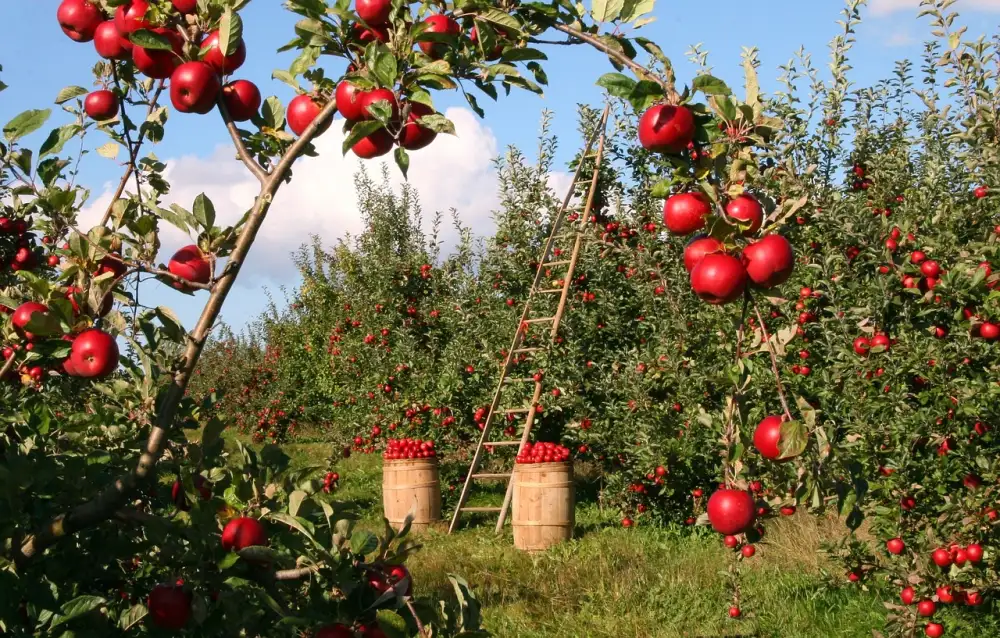Perfectly Timed Harvest: Unlocking the Secrets to When to Harvest Rhubarb at Home

Rhubarb, with its vibrant red stalks and tart flavor, is a beloved ingredient in many delicious recipes. But before you can enjoy the tangy goodness of this versatile plant, you need to know when and how to harvest it properly. In this article, we will unlock the secrets to perfectly timed rhubarb harvesting at home. From understanding its growth cycle to recognizing signs of readiness for harvest, we will guide you through every step of the process. So grab your gardening gloves and get ready to embark on a journey of rhubarb harvest like never before!
Understanding Rhubarb Growth Cycle
To successfully harvest rhubarb, it is essential to have a good understanding of its growth cycle. Rhubarb is a perennial vegetable that thrives in cool climates. It typically starts growing in early spring, with the emergence of thick, red or green stalks and large, vibrant leaves.
During the first year of planting, it is important to resist the temptation to harvest any rhubarb stalks. This allows the plant to establish a strong root system and ensures a healthier and more productive harvest in subsequent years.
In the second year, rhubarb plants enter their prime growing phase. The stalks become thicker and more abundant, while the leaves grow larger. This is when you can start harvesting rhubarb for consumption.
As the growing season progresses, the stalks may become tougher and less flavorful. This is an indication that the plant's energy has been focused on seed production rather than producing juicy stalks. To maintain optimal flavor and tenderness, it is best to harvest rhubarb before this stage.
By understanding the growth cycle of rhubarb, you can ensure that you harvest at the perfect time for maximum flavor and quality.
Signs of Rhubarb Readiness for Harvest
Knowing when your rhubarb is ready to be harvested is crucial to ensure the best flavor and texture. Here are some signs to look out for:
1. Size: Mature rhubarb stalks should be at least 10-15 inches long and about 1 inch in diameter. If they are still thin and small, it's best to wait a little longer.
2. Color: The color of the stalks can also indicate readiness. Look for vibrant, deep red or pink hues. Avoid harvesting if the stalks are mostly green as they may not be fully matured.
3. Firmness: Gently squeeze the stalks to check their firmness. They should feel crisp and firm, indicating that they are ready to be picked.
4. Leaf development: Take a close look at the leaves of your rhubarb plant. If they have fully unfurled and are healthy-looking, it's a good indication that the plant has reached maturity.
By paying attention to these signs, you can ensure that you harvest your rhubarb at its peak flavor and tenderness, resulting in delicious dishes that truly showcase this versatile ingredient.
Best Time to Harvest Rhubarb
Timing is crucial when it comes to harvesting rhubarb. The best time to harvest rhubarb is when the stalks are thick and firm, but before they become too woody or start to flower. Typically, this occurs in late spring or early summer, around April or May, depending on your location.
To determine if your rhubarb is ready for harvest, look for stalks that are at least 10-15 inches long and have a deep red color. Gently tug on the stalks; if they come off easily without resistance, it's a good indication that they are ready to be harvested.
It's important not to wait too long to harvest rhubarb as the stalks can become tough and stringy if left on the plant for too long. Additionally, once the plant starts flowering, the energy is diverted towards seed production rather than stalk growth, resulting in less flavorful rhubarb.
By harvesting at the right time, you'll ensure that you're getting the most tender and flavorful stalks from your rhubarb plant. So keep an eye on your plants and don't miss the perfect window of opportunity for a bountiful harvest!
How to Harvest Rhubarb Properly
To ensure a bountiful and successful rhubarb harvest, it is crucial to know how to harvest this versatile plant properly. Here are some essential tips to guide you through the process:
1. Use the right tools: Before starting, make sure you have a sharp knife or garden shears, as well as gloves to protect your hands from the sharp edges of the leaves.
2. Choose mature stalks: Look for stalks that are thick and firm, with vibrant colors. Avoid harvesting thin or limp stalks, as they may not have reached their full potential.
3. Twist and pull technique: To harvest rhubarb, firmly grasp a stalk near its base and gently twist it while pulling upwards. This technique helps detach the stalk from the plant without damaging neighboring ones.
4. Leave some stalks behind: It's important not to remove all the stalks at once. Leave at least one-third of the plant intact to allow it to continue growing and replenishing its energy reserves.
5. Remove leaf blades immediately: Once you've harvested a stalk, remove its leaf blades immediately. Rhubarb leaves contain oxalic acid, which can be toxic if ingested in large quantities.
6. Trim and discard any damaged parts: Inspect each harvested stalk for any signs of damage or disease. If you notice any discolored or rotting areas, trim them off and discard them properly.
7. Rinse before use: Before using your freshly harvested rhubarb in recipes, give it a thorough rinse under cold water to remove any dirt or debris that may be clinging to the stalks.
By following these steps, you'll be able to harvest rhubarb properly and enjoy its tangy goodness in various culinary creations!
Storing and Preserving Rhubarb Harvest
Once you have successfully harvested your rhubarb, it's important to know how to store and preserve it properly to ensure its freshness and flavor. Here are some tips for storing and preserving your rhubarb harvest:
1. Remove the leaves: Cut off the leaves from the stalks as soon as you harvest them. The leaves contain oxalic acid, which is toxic, so it's best to discard them.
2. Rinse and dry: Give the stalks a quick rinse under cold water to remove any dirt or debris. Pat them dry with a clean towel before proceeding.
3. Refrigerate: Place the rhubarb stalks in a plastic bag or wrap them in a damp paper towel. Store them in the refrigerator, preferably in the crisper drawer, where they can stay fresh for up to two weeks.
4. Freezing: If you have more rhubarb than you can use within two weeks, consider freezing it for later use. To freeze rhubarb, cut it into small pieces and blanch them in boiling water for 1-2 minutes. Then, transfer the blanched rhubarb into an airtight container or freezer bags and place them in the freezer.
5. Preserving: Another way to enjoy your rhubarb harvest throughout the year is by preserving it through canning or making jams and compotes. Follow proper canning techniques and recipes to ensure safe preservation.
Remember that while frozen or preserved rhubarb may not retain its crisp texture like fresh rhubarb, it still retains its delicious flavor and can be used in various recipes such as pies, tarts, sauces, and even cocktails.
By properly storing and preserving your rhubarb harvest, you can continue to enjoy this versatile ingredient long after its growing season has ended. So go ahead and savor the taste of summer all year round!
Now that you have successfully harvested your rhubarb, it's time to enjoy the fruits of your labor. With its tart and tangy flavor, rhubarb is a versatile ingredient that can be used in a variety of dishes.
One classic way to savor the taste of rhubarb is by making a delicious rhubarb pie. The combination of sweet and sour flavors creates a perfect balance that will leave your taste buds craving for more.
You can also try making a refreshing rhubarb compote to serve with yogurt or ice cream. Simply cook the chopped rhubarb with sugar and water until it becomes soft and syrupy. This compote can be stored in the refrigerator for several days, allowing you to enjoy it whenever you desire.
Another option is to preserve your rhubarb harvest by making rhubarb jam or jelly. These preserves can be enjoyed on toast, scones, or even as a topping for pancakes. They also make great gifts for friends and family who appreciate homemade treats.
Remember, when cooking with rhubarb, it's important to balance its tartness with sweetness. Adding sugar or pairing it with sweeter fruits like strawberries can help mellow out its sharp flavor.
So go ahead and explore the culinary possibilities that come with your freshly harvested rhubarb. Whether you choose to bake pies, make preserves, or experiment with new recipes, one thing is certain - your efforts will be rewarded with delectable dishes that truly showcase the love and passion you put into growing your own food.
Published: 11. 12. 2023
Category: Home



